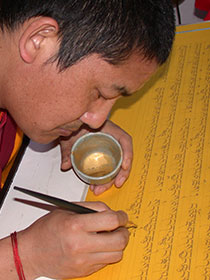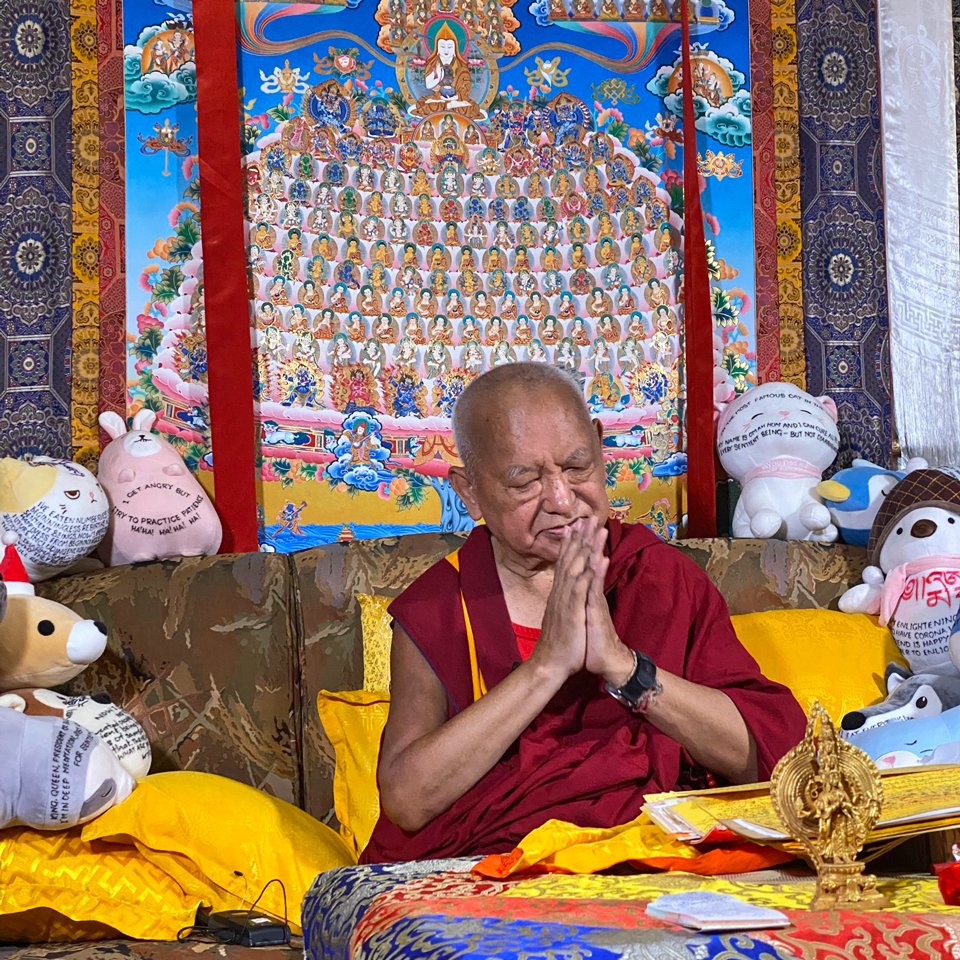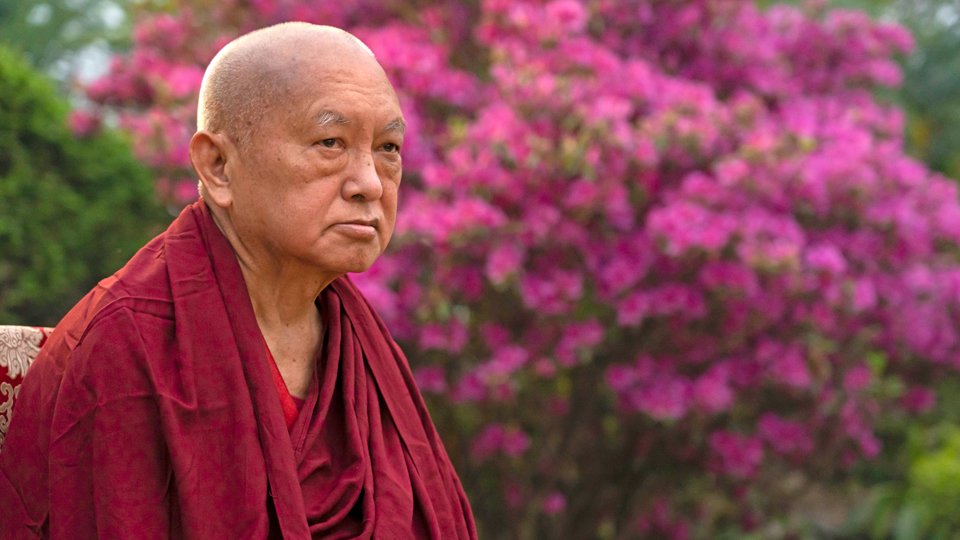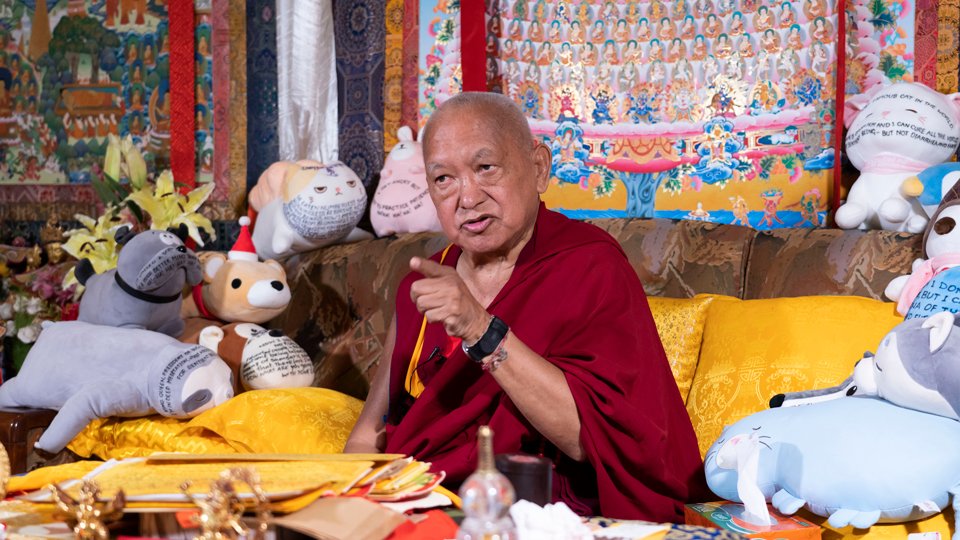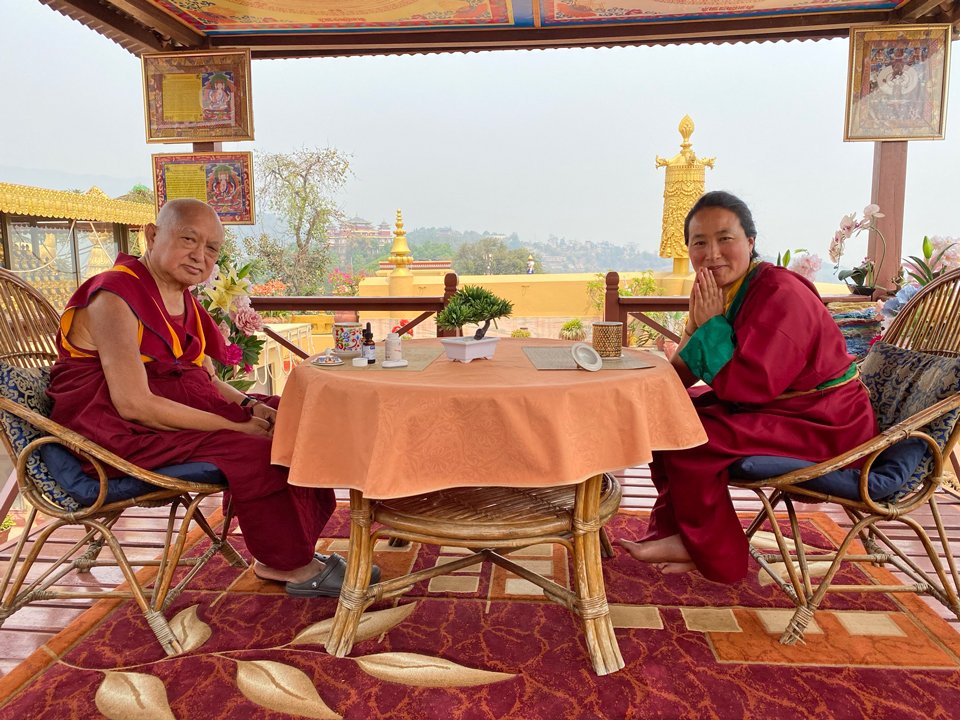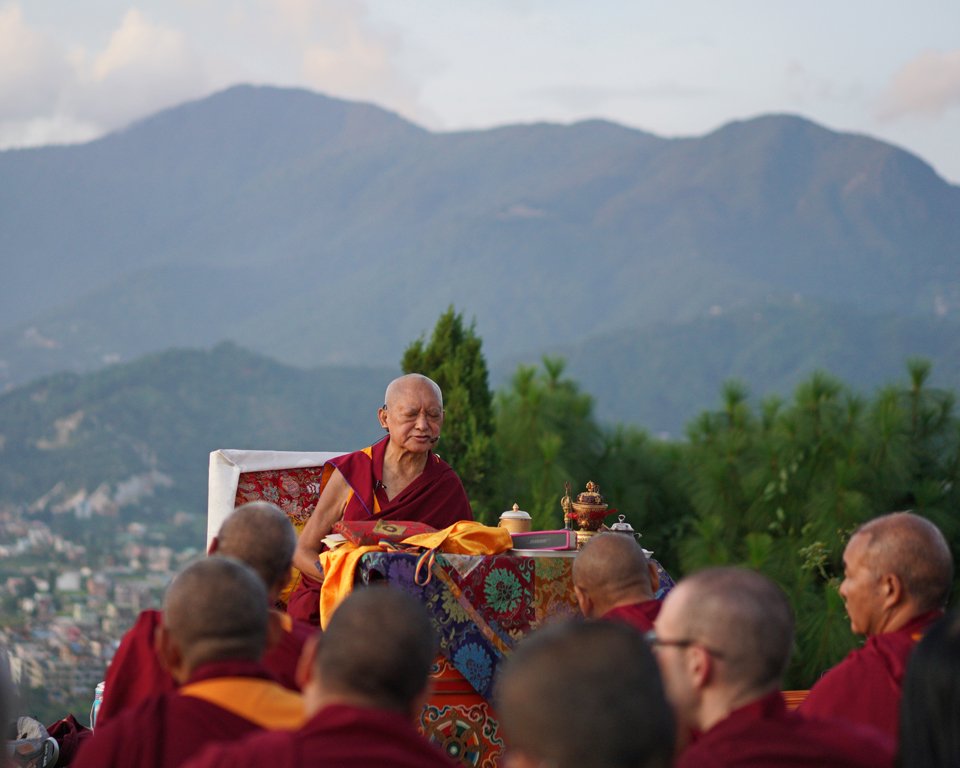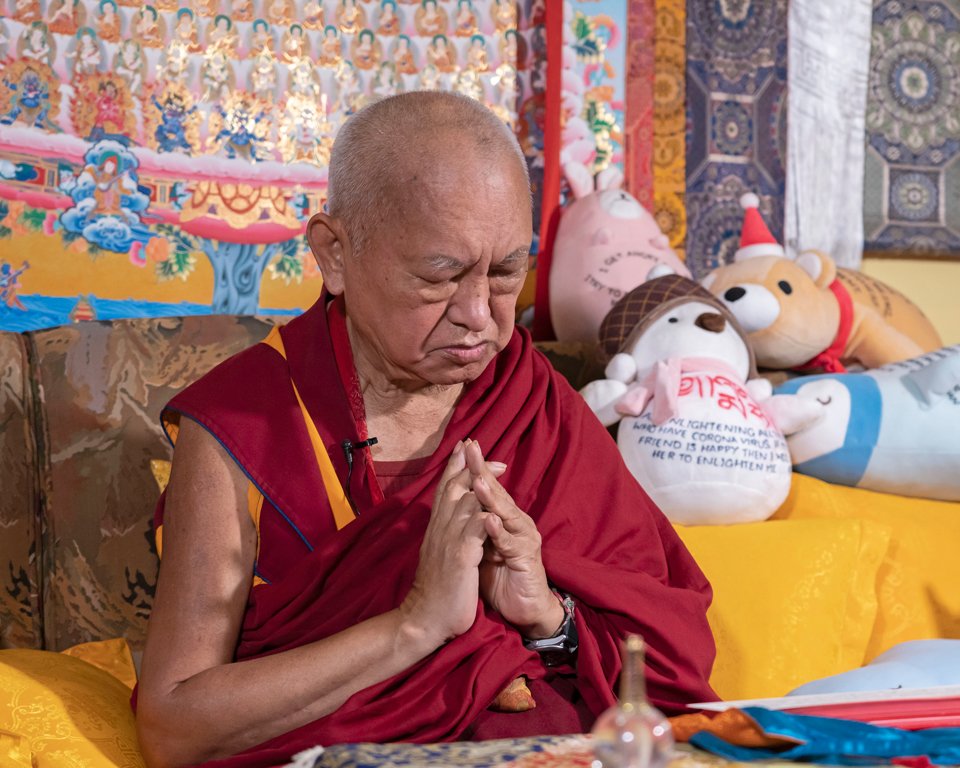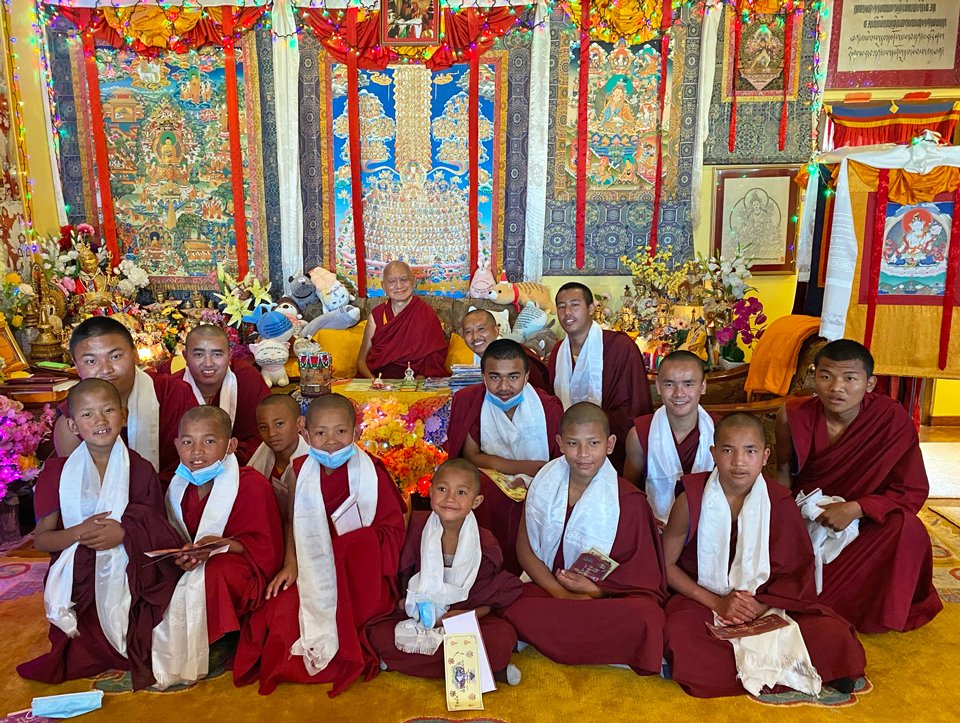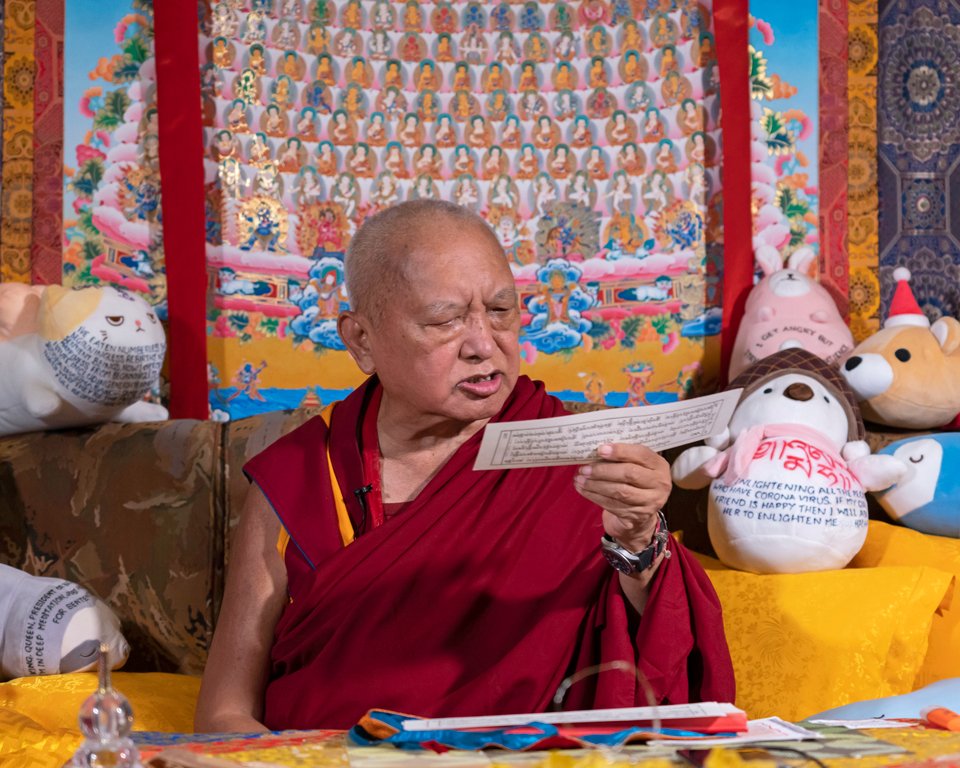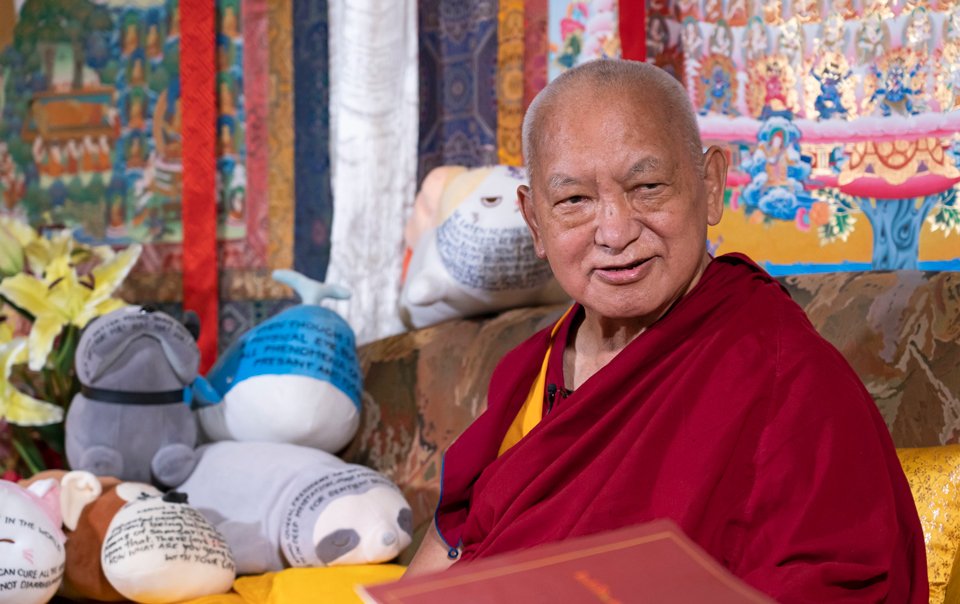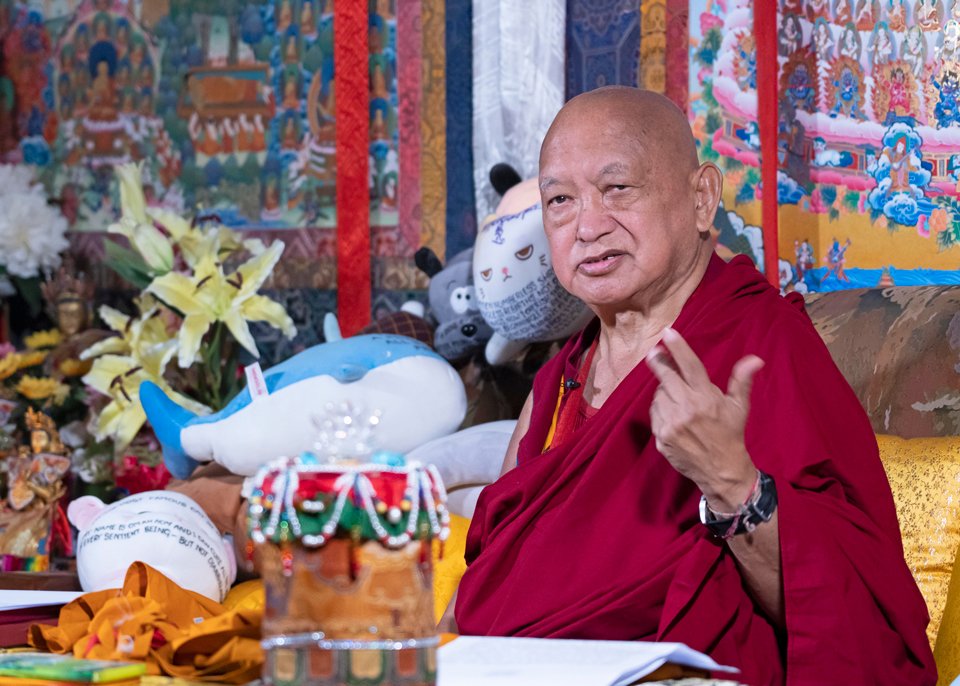If we get angry for one second with a bodhisattva—somebody who has bodhichitta—that anger destroys one thousand eons of good karma that was created. The good karma is destroyed; the merit is destroyed. The anger arising for one second causes us to be reborn in the lower realms and to suffer there for one thousand eons, and our realizations are delayed for one thousand eons. These are the three shortcomings of generating anger or heresy toward His Holiness the Dalai Lama. The Buddha, His Holiness the Dalai Lama, is Chenrezig.
Khadro-la (Rangjung Neljorma Khadro Namsel Drönme) said she really sees [His Holiness as] Buddha. A long time, maybe many years ago in South India, after His Holiness had left, there was some of His Holiness’s holy kaka in the toilet, a small piece was left, when she went to see His Holiness’s room. The bodyguards didn’t know what to do, so she asked if she could have it. Then she took it in her hand and swallowed it. She took it as a most precious thing, then all the bodyguards were very surprised. She thinks her way of seeing His Holiness was different from the bodyguards. They didn’t see him as Buddha, but she sees Buddha. So she immediately swallowed; she said that was the best thing in life to do. All the bodyguards were very surprised. She had no doubt. She did not feel dirty. She just had pure appearance. She recently said His Holiness is real Buddha. So for her pure mind, she sees Buddha.
If we get angry with bodhisattvas who have bodhichitta—we don’t have bodhichitta, but those whom we get angry with have bodhichitta—then even one second of anger destroys one thousand eons of merits. I explained the other two things—that we have to suffer for one thousand eons and our realizations are delayed for one thousand eons.
If we get angry with a buddha, not just one thousand eons of merit are destroyed, but ten thousand eons or more than a million eons are destroyed, I’m not sure.
If we get angry with the guru, who is the highest, then 100,000 eons or millions of eons of merits are destroyed. It’s unbelievable, unbelievable. That many eons of merits get destroyed, and we suffer in the lower realms. It’s unbelievable, unbelievable, then our realizations are delayed for an unbelievably, unbelievably long time. In every second [of anger toward the guru] we create heavy negative karma to suffer in the lower realms, in the heaviest suffering realm, and we remain in that unbelievable suffering state for many eons. If we create that negative karma of getting angry with the guru for even one second, then we have to suffer for so many eons in the heaviest suffering realm. This is what we are creating.
“How One Second of Anger Destroys Eons of Merit,” was originally published in “Lama Zopa Rinpoche’s Online Advice Book” on the Lama Yeshe Wisdom Archive website (LamaYeshe.com), where you can find more advice from Rinpoche on a wide variety of topics.
Lama Zopa Rinpoche is the spiritual director of the Foundation for the Preservation of Mahayana Tradition (FPMT), a Tibetan Buddhist organization dedicated to the transmission of the Mahayana Buddhist tradition and values worldwide through teaching, meditation and community service.
Watch Rinpoche’s recent teachings and find links to transcripts, MP3s, additional practice advice, and more on the page Lama Zopa Rinpoche’s Teachings on Thought Transformation during the Time of COVID-19.







